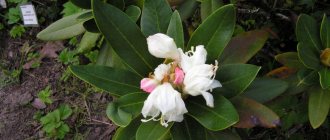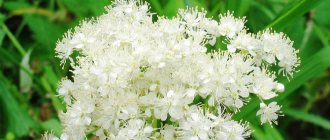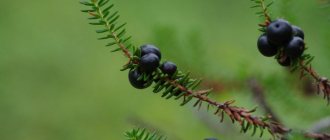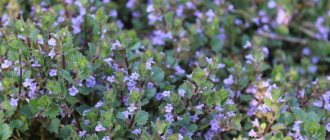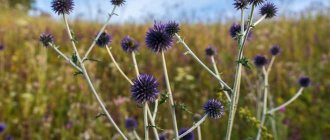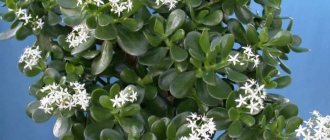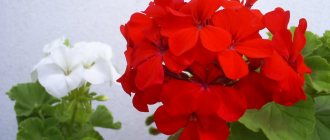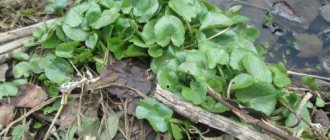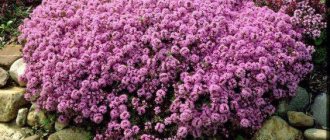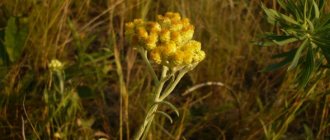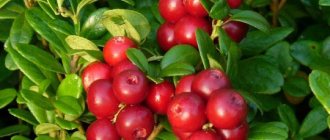There are a huge number of garden and ornamental shrubs all over the world. Today we want to talk about an amazing plant - Pontian butcher's broom, other names of which are prickly butcher's broom, spiny butcher's broom. People have known about the plant since time immemorial. Even in ancient times, historians Pliny and Virgil mentioned it, speaking about its miraculous properties that help heal many ailments. By the way, they called it ruskus. From the presented material you will learn what this plant is, what medicinal properties it has, and how to use butcher's broom in the fight against ailments.
Description of the plant
The Latin name of this plant is ruscus aculeatus. Currently, butcher's broom is a rare, endangered species. It is believed that this species originated in the Tertiary period. We bring to your attention a description of Pontian broom and a photo of this unusually beautiful plant.
It belongs to evergreen shrubs or subshrubs. In natural conditions, butcher's broom can grow up to half a meter, sometimes a little higher. Butcher's broom received its original and unique name due to its appearance: it is all covered with small needles. The leaves of the plant have lanceolate scales that are barely noticeable. The part of the plant that everyone takes for leaves—the cladodes—is not. These are leaflets or simply flat twigs with a pointed end in the form of a thorn. The buds are formed on their lower part, have a greenish tint and purple stamens. The plant blooms from February to April.
According to the description of Pontian broom, it has both female and male flowers on the bush, which can be pollinated with dew or during rain. After this, unusually beautiful fruits appear on the bush - bright red balls, the diameter of which is 8-10 mm. They have 2-3 seeds inside. Fruit ripening occurs from August to September. The edible berries have a pleasant taste; previously they were used to prepare a coffee surrogate.
General information about the Ruscus culture
Beautifully flowering and undemanding houseplant Fuchsia
A plant with the unusual name “butcher’s broom” comes from the southern regions of Eurasia, specifically the southern Crimea, Mediterranean countries, and the Caucasus. It belongs to the botanical family Asparagus and is a shrub. In Latin, the name of the flower is “ruscus”.
Let's move on to the botanical characteristics of the ruscus plant. Butcher's broom (Ruscus) has hard branches of a dark green hue, covered with phyllocladia - shortened shoots that copy the leaves. Their shape is flattened. The reproductive organs of butcher's broom are greenish flowers, quite small. Both phylloclades and flowers appear in the axils of scale-like leaves. After a certain period of time after pollination, berries with one or two seeds in the middle appear on the plant. Their sizes are small - the diameter of these fruits does not exceed 1.5-2 cm. The berries are colored red. Taking into account the fact that ruscus is a dioecious plant, you can have a flower that produces fruit every year.
Ruscus is part of the plant genus of the same name. It includes about 10 species. Of all the types of ruscus, the easiest to grow at home are prickly broom and butcher's broom. The original one has spiny phyllocladia of very high rigidity, dark green color, and lanceolate shape. The second is distinguished by its short stature, excellent hardiness, and false leaves rounded at the top. Butcher's broom is on the verge of extinction.
It is also necessary to remember about other decorative types of butcher's broom.
- Butcher's broom. It can reach a height of 1 m. On erect stems, lanceolate phyllocladies with spiny points appear in a green-gray hue. The berries are scarlet and large.
- Butcher's broom. In nature it grows in shady forests. About 0.5 m in height, they have phylloclades narrow at the very base with a surface with a glossy effect.
- Butcher's broom of Colchis. Refers to medicinal flora. Its parts are used to combat such ailments as thrombosis, slagging of the body, reduced vascular flexibility, and very high blood viscosity.
- Butcher's broom is a resident of mountain slopes. This is a relict plant. Found in northern Iran and the Caucasus.
Photo: ruscus (ruscus)
Habitat
In the wild, the shrub can be found in Western Europe, where it grows in juniper and pine forests, next to rocks. In addition, butcher's broom loves to coexist with hornbeams and oaks. Some species of this plant grow in Asian and African countries. The habitat of Pontic broom in our country is the woody areas of the Crimea and the Caucasus. It should be noted that this plant is listed in the Red Book and is under state protection.
Main types
In total, five varieties of this shrub have been studied to date. Each species has a number of characteristics and differences in growing conditions.
Butcher's broom ruscus hypophyllum
Italian butcher's broom or Ruscus subleaf is similar in appearance to the variety of its prickly relative. This type of culture is characterized by:
- long erect shoots reaching 50 cm in length;
- foliage is rich green in color, oblong in shape;
- The flowers are small, white or bluish in color and bloom closer to the onset of spring.
Mousethorn, another name for ruscus, is a creeping rhizome. The root system is located shallow under the soil and forms modified shoots. Each sprout looks like a thin plate of emerald color. The shoots are erect and have distinct veining.
Butcher's broom ruscus aculeatus
The natural habitat of the evergreen shrub is Western and Southern Europe, Turkey and North America. The culture chooses habitats in clearings, oak and hornbeam groves, forest edges and forests where juniper grows. This variety of ruscus is the most popular among florists and gardeners. The shrub grows up to 60 cm in height. This variety of butcher's broom differs:
- shoots are tough;
- The shape of the sprouts is heart-shaped, oval or leaf-like, pointed at the end. Due to the shape of the shoot, it is often mistaken for ordinary leaves;
- inflorescences are small, white with a greenish tint. Butcher's broom blooms at the end of February;
- As autumn approaches, the bush becomes covered with small, beautiful red berries. The fruits are a real decoration of this bush;
- easily tolerates low temperatures.
Butcher's broom is not picky about the soil for growing. It can develop even with a lack of moisture and light-loving conditions. However, it also develops well in shaded areas.
Butcher's broom ruscus colchicus
The habitat of this variety of culture is limited. Ruscus Colchis grows in Georgia, eastern Turkey and the Black Sea coast of the Russian Federation. The culture prefers to grow among deciduous and coniferous trees. It takes root well on clay and loamy soil with a high lime content. Loves shade. It is worth noting that this variety of butcher's broom is an endangered species.
Biological characteristics of Ruscus Kolkhoda:
- the plant develops and reaches 60 cm in height;
- looks like a bush;
- the stems reach 4 cm in width and do not branch;
- the foliage of the crop is small in shape and resembles an awl;
- the flowers are white and concentrated at the bottom of the plant.
A distinctive feature of this plant variety is its almost continuous flowering. The shrub blooms in late autumn. And the fruits appear in spring. At the same time, the appearance of flowers is often observed in summer. The shrub is pollinated by creeping insects.
Butcher's broom ruscus hypoglossum
The homeland of this variety is the territory of Central Europe, Asia Minor, the western Mediterranean and the Balkans. In Russia, butcher's broom can only be found in the south of the Crimean Peninsula. The culture loves shady forest areas with increased dampness and rocks. In addition, growing bushes can be seen among the stones.
Butcher's broom looks like this:
- erect bush growing up to 40 cm;
- large cladodes reaching 2 cm in width;
- the shape of the cladodes is oblong-lanceolate;
- the bract differs from its relatives. It is large and grows in a tongue-like shape with small purple flowers visible underneath;
- Butcher's broom blooms in May. And by the beginning of August, large red fruits appear. Fruiting continues until the beginning of winter.
The perennial plant grows in small groups or in single copies.
Butcher's broom ruscus hyrcanus
This relict species appeared on earth 70 million years ago. Ruscus Hyrcanian is found only in two regions of Azerbaijan, in the southern part of Crimea and in the north of Iran. It grows in the lower mountain zone and in the lowlands.
Butcher's broom Girkanska chooses places where there is shade. Therefore, it grows under tree canopies. The favorite areas of this variety are boxwood groves, chestnut oaks and ironwood trees. In shaded areas, the culture grows and forms continuous covers. However, if the forests are cut down, the broom remains without protection from the sun's rays and dies.
Today, the number of wild crops of this variety is rapidly decreasing. Therefore, measures were taken to save her. Butcher's broom is listed in the Red Book and is protected by the Hyrcanian National Park.
The plant is characterized by the following features:
- perennial shrub growing up to 40 cm;
- a constant lack of moisture in the habitats negatively affects the fruits of ruscus. The berries grow small, making them difficult to see;
- on one bush up to three stems and 6 lateral shoots of the same length are formed;
- the shoots of this variety resemble leaves and perform their function;
- Each cladode has a sharp end. The shape is ovoid, but occurs in broadly lanceolate forms;
- at the end of the stem a whorl of lateral shoots is visible. The central shoot is responsible for the further development of the culture;
- in April, a bract is formed in the center of the midline of the cladode. Small greenish inflorescences form in the axil of the bract;
- male and female flowers bloom on the bush. Pollination occurs with the help of crawling insects;
- The variety is suitable for indoor growing. With proper watering and diffused light, the fruits grow large and ripen by the end of September.
The main decoration of the Hyrcanian variety of butcher's broom is its bright scarlet fruits. With proper care, the berries will ripen by September and will be pleasing to the eye until the end of winter.
Healing properties
Butcher's broom also has medicinal properties. It is widely used in folk medicine due to its rich chemical composition, which includes many healing and beneficial substances. Decoctions and tinctures prepared on its basis treat venous insufficiency, atherosclerosis, arthritis, varicose veins, bronchial asthma, and diseases associated with dysfunction of the cardiovascular system. The plant contains:
- proteins;
- saponins;
- vegetable fibers;
- sucrose;
- vitamins PP, C;
- fats;
- trace elements (potassium, iron, magnesium, phosphorus, aluminum, calcium, etc.).
And this is not the entire list of useful substances that make up the butcher's broom, photos of which are presented in the review.
Chemical composition and active substances
Ruscus is used in the manufacture of many medicines and cosmetic products. The evergreen shrub is widely in demand due to its chemical composition:
- fats, proteins and sucrose;
- vitamins of group PP and C;
- vegetable fibers;
- magnesium, potassium, manganese, phosphorus, chromium and other useful trace elements.
Important: The healing plant butcher's broom has many names, butcher's broom, asparagus, mousethorn and ruscus. This culture is widely used by florists to create spectacular flower arrangements. The fruits are used to make a coffee drink and even jewelry.
The medicinal components of butcher's broom are mainly concentrated in the root system. The root contains most of saponosides, heterosides and rutosides.
Healing functions
Butcher's broom has a number of medicinal properties aimed at eliminating exacerbation of hemorrhoids, venous dysfunctions that occur during premenstrual syndrome, taking oral contraceptives, and pregnancy. Let's consider the main medicinal functions of butcher's broom, which all medicines prepared from this plant have:
- reducing capillary fragility;
- strengthening the walls of blood vessels and veins;
- reducing the risk of thrombosis;
- increased tone.
The use of butcher's broom helps remove toxins and waste from muscle tissue, reduces the risk of inflammatory processes, significantly improves cell metabolism, restores water-salt metabolism, and stimulates blood circulation. It should also be noted that butcher's broom has a beneficial effect on swelling, heaviness in the legs, and hemorrhoids. It is an indispensable remedy for alleviating chronic venous insufficiency and helps cope with convulsive spasms in the legs.
What are the benefits of butcher's broom?
Saponosides have a healing effect on the vessels of the veins. Ruscus in oral medications is used to constrict blood vessels in the skin.
Butcher's broom (prickly) has medicinal properties aimed at eliminating exacerbation of hemorrhoids, venous dysfunctions manifested in premenstrual syndrome, pregnancy and the use of oral contraceptives. Preparations containing ruscus are used for:
- constriction of venous vessels;
- strengthening venous walls;
- reducing the fragility and permeability of capillaries and vessel walls;
- increasing the tone of smooth cellular muscles;
- improving cell metabolism;
- removing toxins from muscle tissue;
- stimulation of blood circulation and water-salt metabolism;
- obstacles to the formation of inflammatory processes;
- reducing the formation of blood clots.
An extract based on ruscus roots is used as a diuretic to relieve inflammation, relieve pain and heaviness in the legs due to venous insufficiency, and when the kidneys and gallbladder are not functioning properly.
The plant as part of anti-cellulite products helps to activate peripheral circulation and restore skin elasticity.
Features of the effect on the body
The plant is successfully used for gout, circulatory disorders, jaundice, thrombosis, and disorders of the gallbladder and kidneys. In addition, butcher's broom has a slight diuretic and choleretic effect, which, in turn, promotes increased removal of sand and salts from the ureters, kidneys, and gall bladder, while preventing their accumulation. In this regard, the plant-based medicine should be taken with extreme caution, because if stones are present, it can encourage them to move, resulting in a high risk of blockage of the excretory ducts. The plant contains ruscogenin, which has a vasoconstrictor and anti-inflammatory effect. Thanks to these qualities, the product is used for the preparation of rectal suppositories and ointments, which help with hemorrhoids: relieve swelling, pain, eliminate congestion, which significantly improves the patient’s condition.
Butcher's broom is very popular as a venotonic agent; it helps eliminate congestion in the blood vessels of the lower extremities and prevent the progression of the disease. It shows especially good results in combination with horse chestnut preparations.
Options for using butcher's broom
The healing properties of butcher's broom were known thousands of years ago. In the Middle Ages, infusions of ruscus were taken to strengthen strength, as an effective pain reliever and wound healer. Modern medicine has expanded the list of indications. And today, medicinal forms based on the shrub are used for many pathologies.
Traditional medicine
In medicine, gels, ointments and creams prepared from ruscus raw materials are widely used. These remedies are shown:
- rejuvenation of the face, neck and décolleté;
- in the fight against orange peel;
- improving blood circulation;
- treatment of joint pathology;
- relieving exacerbation of hemorrhoids;
- normalization of water metabolism.
Creams made from ruscus extract are effective for varicose veins. A modern and effective development based on shrubs is Venotonic spray.
Use in folk medicine
In folk medicine, the fruits and rhizomes of butcher's broom are valued. Treatments are prepared from the berries:
- jaundice;
- thrombosis;
- atherosclerosis.
Ointments and infusions are prepared from the rhizome to eliminate:
- headache;
- heart rhythm disturbances;
- gout;
- gangrene;
- gallstones;
- swelling.
Important: Ruskus has a disinfecting effect. Due to this property, the roots of the shrub were previously used by butchers to disinfect cutting boards.
Ruscus is used much more widely in alternative medicine. The extract of this shrub is used as an excipient in the manufacture of various preparations, medicinal ointments and creams. Here are some effective plant-based recipes:
- Art. a spoonful of dried raw materials is poured into 1 liter. boiling water Let it brew for 4 hours, then strain. The finished infusion is indicated for menstrual pain, to relieve swelling and discomfort caused by varicose veins;
- Art. pour a spoonful of dried roots into a liter of boiling water and set to cook. After boiling, reduce the heat and simmer for 15 minutes. The resulting mixture is infused for 4 hours, filtered and consumed if lymphatic drainage is impaired;
- in case of exacerbation of hemorrhoids and the appearance of convulsions due to the development of varicose veins, capsules made from an extract of the plant are prescribed.
The fruits of the bush help cleanse the blood. To cleanse biological fluid, it is recommended to consume 2 berries per day.
Methods of application
Butcher's broom extracts are used at a rate of 7-11 mg of ruscogenin per day.
- Infusion: take a large handful of dry raw materials per 1 liter of water, infuse and drink throughout the day.
- Decoction: 60 g of collection per liter of water, drink 2-3 tbsp. per day.
- Capsules: up to 3-6 per day.
Please note: extracts should be taken before meals, capsules and tablets should be taken with water. During exacerbations, it is recommended to take them on an empty stomach. Available in the form of capsules, fresh plant extract, dry collection, tablets, powder, cream, tinctures.
Application: release forms, dosage
Now butcher's broom is produced in the following forms:
- Dried root. Dosage - from one and a half to three grams per day.
- Capsules or tablets. They are usually available in a 4:1 concentration. In this case, let's take 200 mg 2-3 times a day.
- Tincture or liquid extract. If the tincture has a plant to liquid ratio of 1:2, then take 4-6 ml per day. If the ratio is 1:5, then the dosage increases to 8-15 ml of tincture per day.
When using medications, you must carefully study the instructions.
Use in folk medicine
On the basis of butcher's broom, tinctures, decoctions, extracts are prepared, and various ointments are made. Healers successfully use such folk remedies to treat the following diseases:
- headache;
- atherosclerosis;
- gout;
- jaundice;
- spasms;
- renal failure;
- gangrene;
- Alzheimer's disease;
- Raynaud's syndrome;
- Meniere's disease.
Iglitsa ruscus care at home
The original plant needs regular watering for normal growth and formation. However, this measure is important only during the growing season and concerns young specimens. The rule here is to moisten the soil under the ruscus three times a week. When the short shoots of butcher's broom finish their development, the frequency of watering is reduced. During winter, broom is rarely watered, regardless of its age: only once every 7-10 days. When keeping a plant in a room where the thermometer drops below +14?, the substrate in a pot with ruscus must be almost always semi-dry.
Photo: ruscus (ruscus)
Although broom is considered an unpretentious plant, it still needs fertilizing. They are performed once a month, from spring until autumn - exactly during vigorous growth. A complete system fertilizer is suitable for this. During winter, with the arrival of the dormant period, feeding is stopped.
The plant is replanted in the spring, but only if the butcher's broom really needs it. Butcher's broom will inform you of the need to change the pot and soil by the appearance of dried shoots, deterioration of growth and general condition. During transplantation, all untrustworthy phyllocladies must be cut off. Depending on the shape you want to get the plant, replant it in a narrow (for a tree) or wide (for a shrub) container. Compose the soil from the components above. At the bottom of the pot, it is best to make a good drainage layer from small pebbles mixed with sand.
Ruskus is propagated by dividing the rhizome. This is not one, but the most common method of obtaining offspring from butcher's broom. Crushing is performed during transplantation of the specimen in the spring. At the same time, make sure that the planting material primarily contains both phyllocladia and roots. Only in this case will the “semi-finished” plants begin to grow and produce full-fledged brooms. Mature, even old plants with strongly fused rhizomes are suitable for propagation. Before doing this procedure, you should wash the rhizomes. Of the above-ground shoots, only young ones are left. Crushing is recommended to be done using a sharp knife.
The plant is affected by scale insects and mealybugs. To combat these pests, it is necessary to use insecticidal preparations, which are sold in special stores, or grandmother’s time-tested remedies (mostly in the first stage).
Butcher's broom branches are good in flower arrangements. But when cutting them and caring for the crop, always wear rubber gloves, since ruscus is a dangerous representative of the flora. For this reason, keep the pot of butcher's broom out of the reach of children and animals living at home.
Creator: Ponomarenko Nadezhda
The note is protected by copyright and neighboring rights. When using and reprinting material, a strong link to the site for women www.Inmoment.Ru is required!
Tags: butcher's broom, ruscus
Preparation of medicinal mixtures
At home, based on ruscus rhizomes, you can prepare various mixtures that have a beneficial effect.
Diuretic infusion. It should be taken for pain relief from PMS or varicose veins. It is prepared as follows: one large spoon of crushed dry roots of butcher's broom is poured with one liter of boiling water, left for three hours and filtered.
Decoction. Indications for use: treatment of cramps, swelling of the legs, lymphatic congestion, problems in women during menopause. To prepare it, we need 60 g of rhizomes and a liter of water; the components should be combined, let them boil and cook over low heat for twenty minutes.
Home care
Care after purchase
After purchasing a ruscus in a pot and delivering it home, it is provided with good care.
First of all, you need to choose the right place for permanent growth. If the purchase of a shrub falls in the summer months, then it is better to take the pot out onto the balcony or into the garden.
The place should be protected from sunlight.
Due attention should be paid to soil moisture. If necessary, after 10-14 days you can transplant it into a new pot.
Trimming
Pruning should be done as needed.
Potted butcher's broom is quite compact and neat. Dried shoots must be removed.
Twigs are used to decorate bouquets.
IMPORTANT! You should not get carried away with pruning branches. You can cut no more than 30% of the total green mass of the plant per year.
Trimmed healthy branches are used for vegetative propagation.
Watering
During the summer months, a period of increased growth, watering is carried out at least 3 times a week.
In winter it is worth reducing to 1-2 times.
The soil in the pot should be moderately moist.
The green part of the bush is periodically sprayed with settled water.
This will not only wash away dust, but will also promote pollination.
Spraying also prevents the appearance of pests.
Landing
For planting, you can use a ready-made earthen mixture for lemons. When preparing independently in a ratio of 2:1:1:1, mix:
- turf land,
- peat,
- humus,
- sand.
The planting container must have drainage holes . Since the bush does not like stagnant water, the bottom is additionally covered with a good layer of expanded clay or crushed red brick.
Transfer
Ruscus does not need annual replanting, only when necessary.
To give a special shape, various planting containers .
For example, to give the broom the shape of a tree, a high and narrow container is used, and to grow a bush, a wide container is used.
When replanting, all dried branches are removed. The replanting procedure, if such a need arises, should be carried out in the spring months.
Growing from seeds at home
This method of reproduction is one of the most difficult. Seeds for planting must be fresh. Before planting, the seeds are soaked and placed in a refrigerator 5-7 days A layer of 5-8 cm of earthen substrate is poured into the seedling box. are placed on the surface of the soil and sprinkled with sand, a layer of which is no more than 1 cm. Place glass on the box or cover with film and ensure the temperature is 19-21 degrees.
The planted seeds are sprayed and ventilated periodically. Seeds germinate very slowly. Sometimes this takes up to 10-12 months. After the sprouts grow 6-8 cm, they need to be planted in separate pots.
Reproduction
The most effective method of propagation is dividing the rhizome .
This procedure is carried out in the spring . Mature, overgrown shrubs are used.
When dividing the rhizome, you need to know that green shoots should come .
Temperature
grows well at room temperature. In the summer months, it is advisable to take the plant out into the fresh air, for example, into the garden or loggia. It also tolerates temperature drops down to 13 degrees. There are frost-resistant species that are suitable for landscaping garden plots, as well as loggias and balconies.
Also bushy plants include: Irezine, Colocasia, Leptospermum.
Lighting
Butcher's broom loves diffused light and also grows well in the shade. The shrub should not be left in direct sunlight, as young phyllocladies can be severely damaged. The most successful placement is on windows facing east or west.
Ruscus in cosmetology: application
The extract of this plant is widely used not only in medicine, but also in cosmetology. This is due to the healing properties of ruscus, it:
- relieves swelling of various localizations;
- has an anti-inflammatory effect;
- has a vasoconstrictor effect;
- activates blood circulation;
- removes bruises and bags under the eyes.
In cosmetology, butcher's broom is used for external use. The herbal remedy has a positive effect when caring for the skin around the eyes. To do this, it is recommended to combine a certain combination of plants to enhance the effect. For example, you can prepare a cream based on ruscus extract with products from ivy, chamomile and other plants. Thanks to these procedures, it will be possible to remove excess fluid, improve drainage, and remove toxins from tissues.
A medicine based on herbal raw materials from butcher's broom also has a positive effect in the treatment of rosacea. This is the name of the disease, which is caused by the appearance of dilated capillaries and stars on the skin, resulting from poor circulation. The positive effect is due to the fact that the plant has antiseptic, anti-inflammatory, antimicrobial properties. By using medications, you can achieve not only the disappearance of visible manifestations, but also completely get rid of the causes of this condition.
It should be noted that the fight against cellulite and stretch marks will be much more successful if butcher's broom is included in the list of cosmetic care products. Due to the fact that when using such products, blood circulation and metabolic processes are activated, harmful substances are removed, and cell regeneration is stimulated. All this helps get rid of stretch marks and successfully resist cellulite.
Salal
Salad plant arugula
Salal is the name of a very beautiful decorative greenery that perfectly complements color compositions. Salal is very versatile and practical.
Many flowers, such as roses, look exceptionally impressive when framed in salal. Strong and dense salal leaves serve not only as a harmonious frame, giving a bouquet of flowers splendor, but also very well support the buds of the main flowers in the composition. Flower bouquets in which a salal pillow is used instead of packaging look very original, luxurious and stylish. In floral arrangements, salal performs the functions of supporting a bouquet not only in fresh, but also in dried form.
Since salal goes well with almost all flowering plants, florists create a variety of compositions with its participation, from modest and delicate to incredible and creative. If the bouquet consists of flowers of the same shade, the use of salal is optimal to visually “separate” the flowers from each other.
Another important quality of this decorative greenery, beloved by florists, is its vitality, thanks to which floral works with salal remain fresh and colorful for a long time.
Butcher's broom: benefits and contraindications
The plant is successfully used in medicine - official and folk. Ruscus-based products have a very wide range of medicinal properties. However, there are also contraindications for use, among which are the following:
- high blood pressure;
- pregnancy period;
- inflammatory processes of the genitourinary tract.
Please note: if you have high blood pressure and symptoms of venous stagnation, you should consult a doctor before using medications. It should also be noted that if the dosage of medicines based on butcher's broom is not observed, side effects are possible: nausea, stomach upsets.
Butcher's broom, Krasnodar region
Butcher's broom - Ruscus colchicus PF Yeo, 1966. Butcher family - Ruscaceae
Category and status 1 “Endangered” – 1B, UI. A locally occurring Caucasian-Asia Minor relict species with a declining population.
Butcher's broom in the Red Book of Russia – status category 2; Red Book of the USSR - “Species with declining numbers.”
Global Threat Category on the IUCN Red List
Included in the IUCN Red List of Threatened Plants 1997 (Cambridge, 1997). World status: Indeterminate (I) .
Category according to IUCN Red List criteria
Regional populations are classified as “Endangered” – Endangered, EN А1сd; B1b(i); B. S. Tuniev, I. N. Timukhin.
Do not belong.
Brief morphological characteristics
Rhizomatous evergreen subshrub. Height - up to 55 cm. Stems with branches transformed into cladodes in the form of leathery sessile plates with parallel veins, from broadly to narrowly elliptical, 4–13.5 cm long and 2.5–6.3 cm wide, usually short at the apex narrowed.
The leaves are small, filmy, triangular-spherical. Bract no more than 8 mm long, with 3–6 veins. The flowers are bisexual, small, in a short raceme, with a cladode on the underside. Tepals are 1.5–5 mm long. The berry is pedunculated, spherical, red, 10–15 mm in diameter. 2n=40 .
Spreading
General range: Southwest Asia (northeast Turkey); Caucasus (Georgia). Russia: North Caucasus: KK; RA (Tsitsa river, Armenian ridge.
Krasnodar region: Western Caucasus: Belo-Labinsky district (Wolf Gate (19.IX.2004), Bezymianny waterfall (environment of Khadyzhensk), Montenegro plateau, road Belorechensky lane from the Fisht shelter (26.VII.2006, S. A. Litvinskaya));
Western Transcaucasia: Tuapse-Adlersky district (Goytkhsky lane, thyssosamshit grove, basin rivers Psou, Mzymta, Kudepsta, Western and Eastern Khosta, Agura, Matsesta, Western and Eastern Dagomys, Sochi, Psezuapse, Shakhe, Lysaya and Akhun mountains , Psakho river, Kamenka village, Verkhnee Buu village, left bank of the Azhu river,
ur. Monastic glades, left bank of the river. Shakhe from the Bely stream to the Zhmurko stream, watershed ridge. between the river Rudovaya and the Vylomannaya beam, Mount Chugush, ridge. Poznyakovsky, mountains Khuko, Outl, ridge zone of the ridge. Bzych, b. Mad).
Features of biology, ecology and phytocenology
Blooms in April - May, bears fruit in July - September. Mesophyte, sciophyte, calcephyl. It grows in shady forests of the Colchis type, along gorges, in the lower belt, but rises to a height of 1800 m above sea level. m. .
Number and its trends
It grows in groups, sometimes forming large clusters. In the Volch'i Vorota tract (Absheronsky district), 58 shoots were noted on an area of 4 m2; density under the conditions of the KSPBZ is 177 shoots per 1 m2.
Security measures
Protected on the territory of the KSPBZ and SNP. The places of the largest concentrations in the SNP are recommended for a special protection regime.
Information sources. 1. IUCN Red List... 1997; 2. Galushko, 1978; 3. Kolakovsky, 1986; 4. Kosenko, 1970; 5. Mordak, 2006f; 6. Red Book of RA, 2000; 7. Litvinskaya et al., 1983; 8. Litvinskaya, Lozovoy, 2005; 9. Altukhov, Litvinskaya, 1986; 10. Personal communication, S. A. Litvinskaya; 11. Timukhin, 2002a; 12. Tuniev, Timukhin, 2001; 13. Timukhin, 2000b; 14. Solodko, 1985; 15. Data from the compilers. Compilers. . I. N. Timukhin, B. S. Tuniev; rice. S. A. Litvinskaya.
| 02.11.2015 12:02:49
Back forward
Signs and superstitions
According to Feng Shui, plants are living and symbolize life and prosperity. Placing them on the window, bad energy is filtered, close to the bed - the state of the sleeper improves, in the corner - energy does not stagnate.
When positioning the broom, you should take into account that it does not stand on a straight line between a window and a door or two doors, but is located at a distance of one meter from places of work, rest, and sleep.
There is a legend about ruscus, which tells why this plant became evergreen and has such bright fruits. One day, a forest nymph invited all the flowers to a ball. The arriving flowers chatted merrily, danced and showed themselves in all their glory, and only the broom was in the distance.
Then the nymph asked why she was sad. Iglitsa embarrassedly said that she was not attractive enough and had nothing to brag about. The kind nymph gave the broom a gift in the form of beautiful fruit beads and endowed it with evergreen leaves.
Then the butcher's broom, in gratitude for the gift, said that it wanted to be useful to humans and animals. All the flowers, together with the nymph, discussed which part of the butcher's broom should become medicinal. Someone offered fruit beads, which were given to her. Later, references to the medicinal properties of ruscus fruits were found in the works of historians.
Pruning and rejuvenation
Ruscus is a neat plant and does not require any adjustments to its shape. It is enough to remove yellowed shoots. If desired, it can be given the desired shape.
In winter, the plant is dormant and does not require much attention, only periodic watering no more than 2 times a week. Starting in spring, fertilizers should be applied, replanting and pruning should be carried out.
You can buy ruscus in large indoor plant stores. However, its price will depend on the size. The average value on the market is 600 rubles.
Important! Place the purchased plant in quarantine, do not rely on chance. And just in case, treat with phytoferm. After two weeks of “acclimatization,” it can be transplanted into a new pot, paying attention to the condition of the roots.
There are no special requirements for the pot. The main thing is to select the size of the root system, and also take into account what shape the broom will be grown. A wide pot will allow the rhizome to grow, producing many new shoots and giving the plant fullness. Ruscus will not bush in a narrow pot.
Cardiovascular Health
Blood circulation
Butcher's broom has α-adrenergic stimulating properties. The vasoconstrictor effect of the plant is associated with the release of norepinephrine from nerve endings (since cholinergic, prostaglandin and serotonergic mechanisms are excluded). In in vitro studies, phentolamine (an α-adrenergic antagonist) virtually blocks the contractile response, while rauwolscine and prazosin engage the α1 and α2 subunits of the receptors. Since chemodenervation (6-hydroxydopamine) and decreased norepinephrine in the synaptic cleft may reduce the effectiveness of butcher's broom, it is believed that the plant stimulates neurons to release norepinephrine, which then acts on α-adrenergic receptors. These vasoconstrictive properties, together with cholinergic stimulation 5) and high temperatures, are additive. While one study suggests that the contractile response of venous smooth muscle to butcher's broom is enhanced by chronic exposure to progesterone, more recent studies examining veins removed from women suggest there is no relationship between the effectiveness of butcher's broom and levels of circulating hormones. At 37°C (average body temperature), the α1 and α2 receptor subunits act similarly. Butcher's broom has a vasoconstrictor effect, but the primary property of the plant is to stimulate the release of norepinephrine from nerve endings, which then affects α-adrenergic receptors. Both major receptors are involved in the process that is believed to underlie the effectiveness of butcher's broom in the treatment of venous diseases. The vasoconstrictor effect of butcher's broom is slightly attenuated by the integrity of endothelial cells in dogs, but the endothelium does not influence the contractile response in varicose veins in humans. This discrepancy may be explained by the fact that the endothelium of varicose veins may be dysfunctional. There is some evidence that butcher's broom indirectly causes relaxation by stimulating endothelial factors, at least in the coronary arteries. Butcher's broom may have a relaxing effect on blood vessels, which counterbalances the stenotic effect. This process may be mediated by stimulation of the endothelium. There is no data on the practical significance of this effect, since oral administration of butcher's broom is required.
Conditions for cultivating Ruscus culture
Lighting. Ruscus does not stand out for its capriciousness, and this is first evident in the requirements it places on the level of illumination. You can place a pot of butcher's broom both in the shade and on the sunny side of the house - in any case, the flower will please you with its proper development and growth. However, consider this option the moment that the rays of the daylight to which the ruscus is exposed should be diffused, and not direct. This is all due to the fact that under such intense influence of ultraviolet rays, short shoots of phyllocladia may well dry out. Heat mode. In the room with butcher's broom in spring and summer, you should maintain home temperature. If this is not possible, take the pot with the culture out into clean air for a day. In winter, the thermometer in the room with ruscus should not fall below +13?. The love for the coolness of butcher's broom allows you to install containers with this plant in the halls and foyers. Air humidity
The level of this environmental indicator does not play an important role in the life of broom. But sometimes it’s worth washing or spraying it in order to save the green parts of the crop from settled dust and make breathing easier. Land and container for planting
Because the broom grows larger in its homeland in fairly harsh conditions, for example, on rocky soils, mountain slopes, it does not make any special claims to the composition of the soil. However, if, for example, you still want to make sweet ruscus, mix 3 parts of leaf soil, 1 part of turf soil and the same amount of river sand. It is in this substrate that you plant your green pet. Remember: the soil under the ruscus should not be very dense, and drainage holes for excess moisture must be made in the bottom of the pot in advance.
